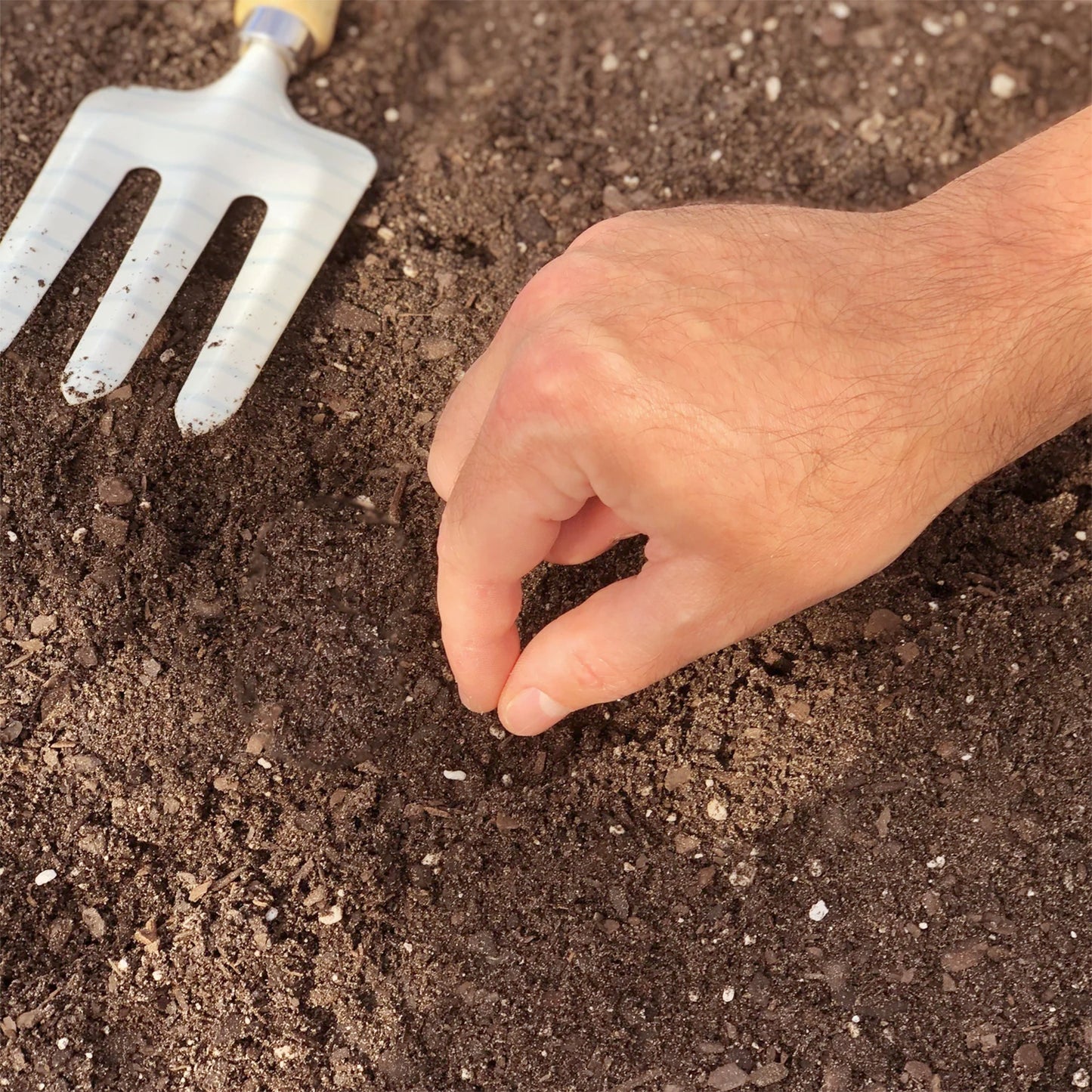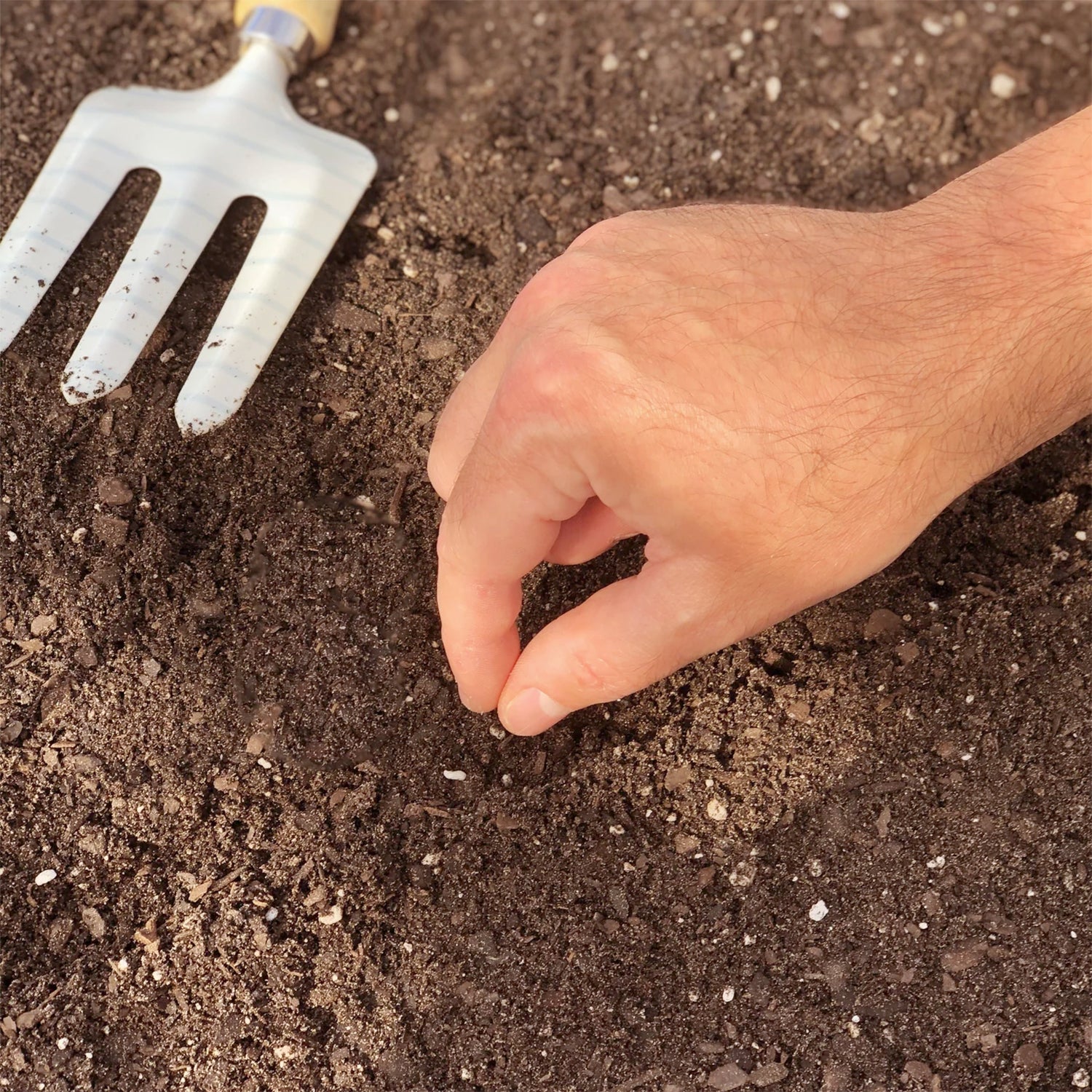Beans are a warm season crop and seeds should be sown directly into the garden when the soil is warm and all danger of frost is past. Optimum soil temperature (not air temperature) should be 15-29°C (59-84°F) for seeds to germinate. Planting at a lower temperature will delay germination. Space seeds and plant to the depth indicated below. Press seeds into the soil to ensure good contact and cover with 1.3 cm (1/2 in.) of soil. After planting, water the seeds with a gentle mist or shower. It is critical to keep the soil consistently moist, but not soggy during germination. When your seedlings reach a height of a few centimetres (inches) and have developed 2 or 3 pairs of leaves, it is important to thin them out, according to the plant spacing indicated below. Do not allow the soil to become dry, as young plants have underdeveloped roots and can quickly dehydrate, particularly in windy conditions.















